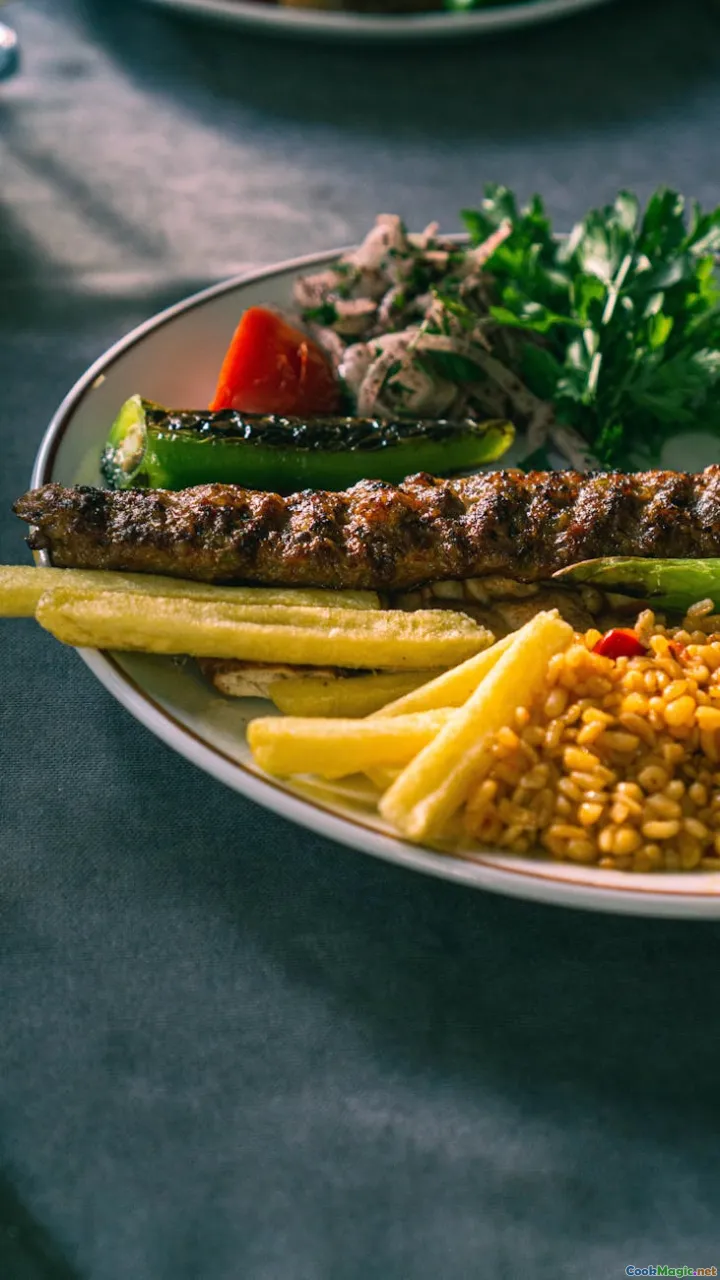Origins and Evolution of Tunisian Mechouia Salad
7 min read Discover the rich history and transformation of Tunisian Mechouia Salad, a vibrant dish rooted in tradition yet evolving through centuries of cultural exchange. May 25, 2025 09:00
Origins and Evolution of Tunisian Mechouia Salad
Introduction: A Flavorful Journey Begins
Imagine walking through the bustling souks of Tunis at sunset, the air thick with the aroma of smoky peppers, charred tomatoes, and fragrant spices. Amidst this sensory symphony lies a humble yet iconic dish—Mechouia Salad. Its vibrant colors and complex flavors tell stories of centuries past, of Berber traditions, Arab influences, and Mediterranean exchanges. This salad isn't just a side dish; it’s a living testament to Tunisia’s rich cultural tapestry.
The Birthplace of Mechouia: Roots in Ancient Traditions
An Ancient Heritage
The origins of Mechouia Salad are deeply intertwined with North Africa’s long-standing agricultural and culinary traditions. The word “Mechouia” itself derives from the Arabic root “shw,” meaning “to roast” or “to grill,” pointing to the fundamental cooking technique that defines this dish.
In ancient times, North African communities relied heavily on locally available produce—peppers, tomatoes, eggplants, and onions—growing in arid climates but thriving in the fertile coastal plains. The indigenous Berbers, Arab settlers, and later Ottoman influences all contributed to the evolution of local food practices, including the art of roasting vegetables over open flames.
The Role of Fire and Smoke
The smoky aroma of Mechouia is no accident. Traditionally, villagers and city dwellers alike roasted their vegetables directly over open fire pits or charcoal stoves. This process not only imparted a distinctive smoky flavor but also served as a practical method of preserving produce before modern refrigeration.
The charred skins were peeled away, revealing tender, flavorful flesh that was then mashed or chopped. This method of preparation was accessible, requiring only fire, vegetables, and a mortar or simple tools—embodying a culinary ethos of resourcefulness and connection to the land.
The Cultural Significance: More Than Just Food
Social and Communal Aspects
In Tunisian villages, preparing Mechouia was often a communal activity, especially during harvest seasons or religious festivals. Families gathered around fire pits, sharing stories and laughter as they roasted vegetables, turning cooking into a social ritual.
Symbol of Hospitality
Today, Mechouia remains a symbol of hospitality and generosity. It’s commonly served during Ramadan, family gatherings, and festive occasions, accompanied by bread, olives, and local cheeses. The dish’s vibrant colors and rich aroma evoke warmth, welcoming guests into the heart of Tunisian culture.
From Tradition to Modernity: The Evolution of Mechouia
Variations Across Regions
While the core ingredients—peppers, tomatoes, eggplants, and onions—remain consistent, regional variations have enriched the dish:
- Cap-Bon and Coastal Areas: Incorporate fresh herbs like parsley and cilantro, adding a bright, herbaceous note.
- Inner Regions: Use preserved or dried vegetables for a more intense flavor.
- Urban Adaptations: Incorporate ingredients like canned or grilled vegetables, making it more accessible in modern kitchens.
Modern Preparation Techniques
Today, many cooks opt for oven roasting or using gas burners instead of open flames, ensuring safety and convenience. Food processors and blenders now speed up the preparation, creating smooth, smoky purees or chunky salads according to preference.
Fusion and Contemporary Twists
Contemporary chefs experiment by adding ingredients like tuna, olives, or even harissa—a Tunisian chili paste—melding tradition with innovation. Some serve Mechouia as a dip, atop toasted bread, or as a component of larger dishes like couscous or stuffed vegetables.
Sensory Experience: Taste, Smell, and Texture
Visual Appeal
The characteristic charred exterior gives Mechouia its smoky blackened patches, contrasting beautifully with the vibrant reds, purples, and greens of fresh vegetables.
Aroma
A complex bouquet of smoky, sweet, and tangy scents fills the air during preparation—an irresistible invitation to taste.
Taste and Texture
A perfect balance of smoky richness, sweet roasted peppers, tangy tomatoes, and silky eggplants. The texture ranges from chunky to smooth, depending on personal preference, often complemented by a drizzle of olive oil or a squeeze of lemon.
Personal Reflections and Cultural Insights
Having traveled through Tunisia, I’ve experienced firsthand how Mechouia is more than just a dish; it’s a reflection of resilience, community, and adaptation. I recall sitting in a seaside café in Sidi Bou Said, savoring a plate of freshly made Mechouia, the smoky aroma mingling with the salty breeze.
In every bite, I felt connected to generations of Tunisians who, through simple yet profound cooking techniques, preserved their cultural identity amid changing times.
Conclusion: A Culinary Bridge
From its humble beginnings as a rural method of preservation to its place in modern Tunisian cuisine, Mechouia Salad exemplifies the enduring power of traditional food. It’s a dish that embodies history, community, and innovation, constantly evolving while remaining rooted in its rich past.
Whether served as a starter, side, or centerpiece, Mechouia invites us all to experience the fiery passion of Tunisian kitchens and the timeless appeal of smoky, flavorful vegetables. It’s a celebration of resilience—an edible testament to Tunisia’s vibrant cultural heritage.
Embark on this flavorful journey and let Mechouia inspire your culinary adventures, connecting you to the soul of Tunisia one smoky bite at a time.









